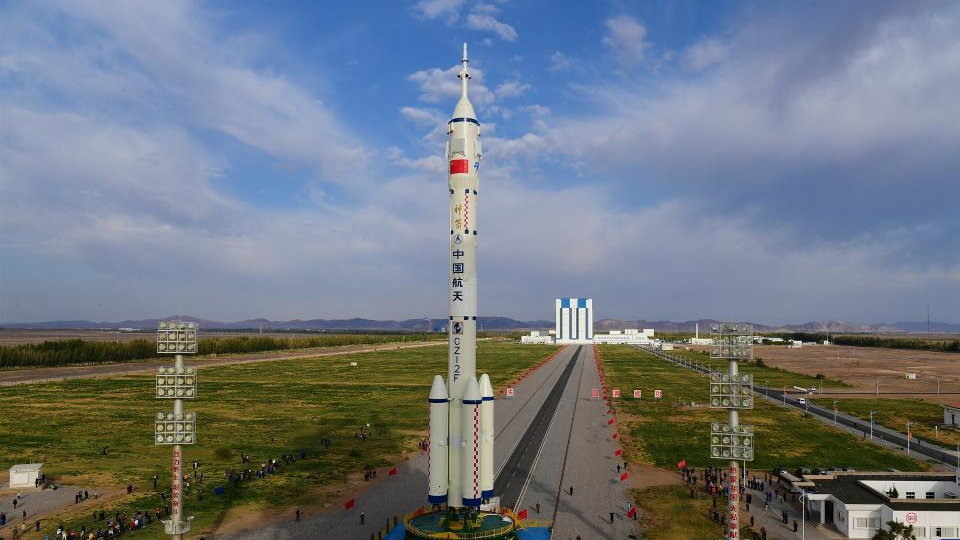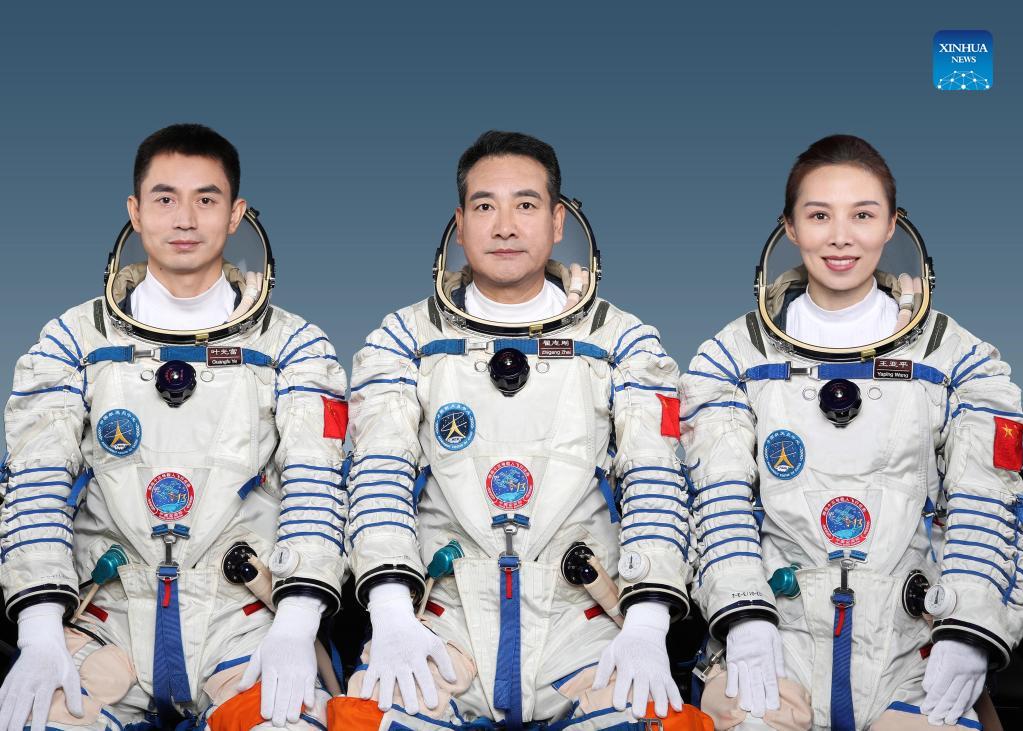
The combination of the Shenzhou-13 manned spaceship and a Long March-2F carrier rocket is transferred to the launching area of Jiuquan Satellite Launch Center in northwest China, October 7, 2021. /Xinhua
The combination of the Shenzhou-13 manned spaceship and a Long March-2F carrier rocket is transferred to the launching area of Jiuquan Satellite Launch Center in northwest China, October 7, 2021. /Xinhua
Editor's note: William Jones is a Washington policy analyst and a non-resident fellow of the Chongyang Institute for Financial Studies. The article reflects the author's views and not necessarily those of CGTN.
China's launch of the second manned mission to the Tianhe module of the Chinese Tiangong space station has garnered great attention and many laudatory comments, particularly from the international space community. It could be said with some justification that China's decision to begin manned space exploration, and, in particular, exploration of the moon, our nearest neighbor, has launched a second wave of human space exploration.
We're all acquainted with the first wave which began with the competition between the U.S. and the Soviet Union to get to the moon, although initially this was proposed by President John F. Kennedy to be a collaborative effort with the Soviets. The reality of the Cold War, however, trumped any well-intentioned proposals for cooperation, and it became a competition, ending with the Apollo landing on the moon. But the death of Kennedy and the onset of the costly (in blood and treasure) Vietnam War effectively ended any further visionary missions involving human space exploration.
Certainly, the Space Shuttle and the International Space Station kept a foothold for mankind in a low Earth orbit, but this became something like "marching in place." Human space exploration was going no further.
China, however, was considering finally taking a step, as it developed its economic prowess, to becoming a space-faring nation. A handful of Chinese space enthusiasts made concerted efforts to develop a program for lunar exploration, which they viewed as the first step into deep space. And once China showed success in this with the Chang'e missions and the launching of the first taikonaut, Yang Liwei, all the space-faring nations, and those wanting to become space-faring nations, received a new lease on life.
The new era of space exploration is not, however, meant as a space "race," although many in the West want to depict it as such. For China and others, one of the primary goals of "returning" to the moon is not to have a nice photo shoot, but it is rather a systematic attempt to utilize the resources of the moon for the good of mankind here on Earth. While the natural resources of the Earth are still immense, they are finite. And for mankind to survive as these diminish, there is the possibility of utilizing the resources that the galaxy offers.
On the moon, in particular, there exist large quantities of iron, magnesium, silicon and calcium, but there are also extensive amounts of Helium-3, which could be a primary source for nuclear fusion energy, a potentially infinite source of energy for mankind.

Chinese astronauts as crew of the Shenzhou-13 space mission (L to R) Ye Guangfu, Zhai Zhigang and Wang Yaping. /Xinhua
Chinese astronauts as crew of the Shenzhou-13 space mission (L to R) Ye Guangfu, Zhai Zhigang and Wang Yaping. /Xinhua
China has placed cooperation, not competition, as the centerpiece of its space exploration program. Astronauts from the European Space Agency (ESA) are in the process of mastering Chinese to work on the Chinese space station and subsequent programs. Chinese astronauts, like Ye Guangfu, now on the Chinese space station, also trained in ESA programs in Italy. And China has always had strong space cooperation with Russia. When the Tiangong space station is completed, we will no doubt see foreign astronauts accompanying their Chinese counterparts in conducting experiments there. Even the present mission contains numerous projects which have been developed in a variety of space institutes and universities around the world.
The only real hold-out on cooperation is the United States, which continues to maintain a ban on cooperation with the Chinese manned program. Meanwhile, the much-touted U.S. Artemis program remains largely dormant and unfunded by a divided and rancorous Congress. Nevertheless, many NASA astronauts have greeted the successful launch of Shenzhou-13 and feel that the U.S. should be cooperating with China in space exploration. But that change can only come from Congress, which is still obsessed with seeing China as a "rival."
During the six-month sojourn, the world is likely to see some very interesting developments on the space station, and we are also looking forward to another one of those much-acclaimed physics lessons to millions of Chinese students by veteran astronaut Wang Yaping.
But this is only the first step. Already now, the China National Space Administration is studying the Apollo landings to prepare for the second step in space, namely, a landing with humans on the moon. Russia and China presented in June their plans for building an international lunar research station, which will also be open to foreign scientists. Future Chang'e missions and Russian Luna missions are geared to prepare for this contingency sometime in 2036.
Space is now on the agenda in a big way for mankind. It is hoped that the world will see this as an opportunity to put some of our disputes behind and begin cooperation on an important journey in securing the future for mankind.
(If you want to contribute and have specific expertise, please contact us at opinions@cgtn.com.)

